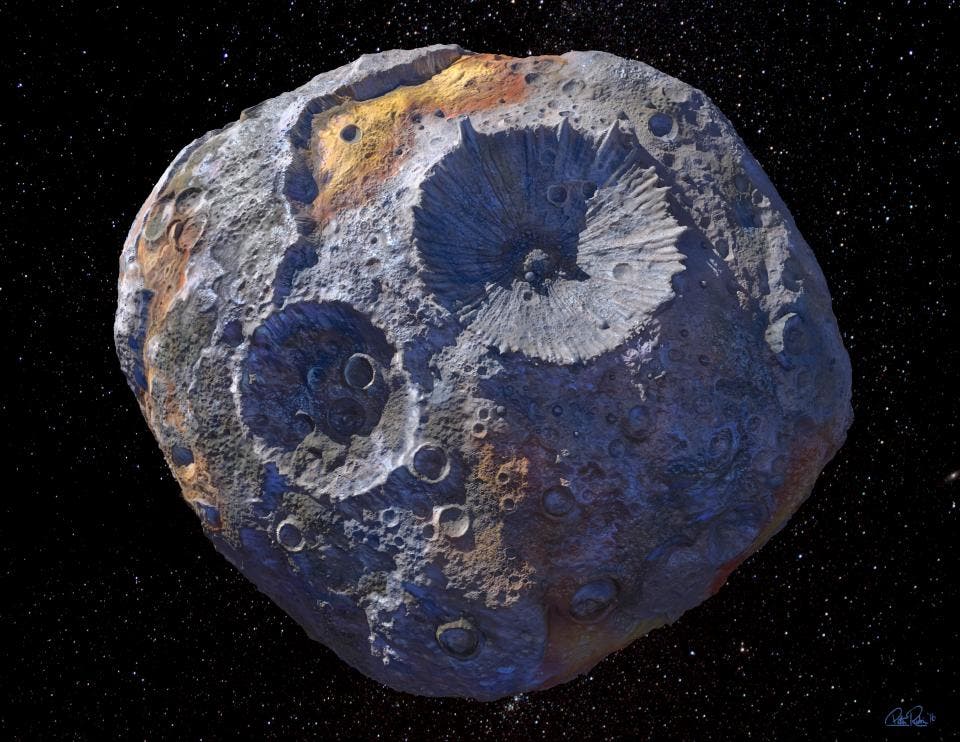NASA has just selected two missions to study the early solar system: one in Jupiter’s Trojan asteroids and the other on a giant metal asteroid which may have once been a planetary core.

Lucy and Psyche were chosen from five finalists if everything goes according to plan, they will launch in 2021 and 2023, respectively.
“Lucy will visit a target-rich environment of Jupiter’s mysterious Trojan asteroids, while Psyche will study a unique metal asteroid that’s never been visited before,” said Thomas Zurbuchen, associate administrator for NASA’s Science Mission Directorate in Washington. “This is what Discovery Program missions are all about – boldly going to places we’ve never been to enable groundbreaking science.”
Jupiter’s Trojans are a large group of asteroids likely numbering over 1 million. They are dark bodies with reddish, featureless spectra. There is no evidence of water on their surface but it is thought that they are coated in tholins, organic polymers formed by the Sun’s radiation. Lucy, a robotic spacecraft, will explore six asteroids thought to be relics an ancient era of the solar system. They may have also formed far beyond Jupiter’s current orbit.
“This is a unique opportunity,” said Harold F. Levison, principal investigator of the Lucy mission from the Southwest Research Institute in Boulder, Colorado. “Because the Trojans are remnants of the primordial material that formed the outer planets, they hold vital clues to deciphering the history of the solar system. Lucy, like the human fossil for which it is named, will revolutionize the understanding of our origins.”
Meanwhile, Psyche will investigate one of the most mysterious objects in the solar system: a giant metal asteroid, known as 16 Psyche. The asteroid is thought to be the exposed iron core of a protoplanet and it seems to have a surface that is 90% metallic (iron) with small amounts of a mineral called pyroxene. If it was indeed the core of a protoplanet, then it could have very well been an Earth-sized planet.
“This is an opportunity to explore a new type of world – not one of rock or ice, but of metal,” said Psyche Principal Investigator Lindy Elkins-Tanton of Arizona State University in Tempe. “16 Psyche is the only known object of its kind in the solar system, and this is the only way humans will ever visit a core. We learn about inner space by visiting outer space.”
Psyche, also a robotic mission, will launch in October 2023, arriving at the asteroid in 2030. The spacecraft would orbit Psyche for six months, studying its topography, surface features, gravity, magnetism, and other characteristics and would be based on current technology, avoiding high costs. It would give us a unique view at what a planetary core looks like – potentially, including our own.
It’s thrilling that the year has just started and we already have two new confirmed missions. Sure, we have to wait a few years before they’re actually launched but
“These are true missions of discovery that integrate into NASA’s larger strategy of investigating how the solar system formed and evolved,” said NASA’s Planetary Science Director Jim Green. “We’ve explored terrestrial planets, gas giants, and a range of other bodies orbiting the sun. Lucy will observe primitive remnants from farther out in the solar system, while Psyche will directly observe the interior of a planetary body. These additional pieces of the puzzle will help us understand how the sun and its family of planets formed, changed over time, and became places where life could develop and be sustained – and what the future may hold.”


